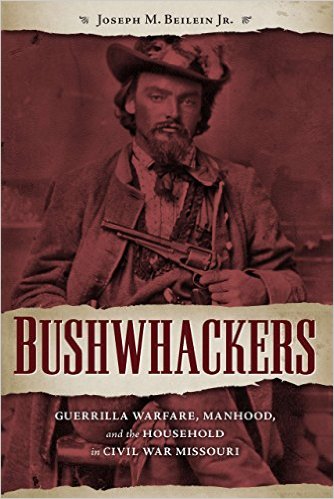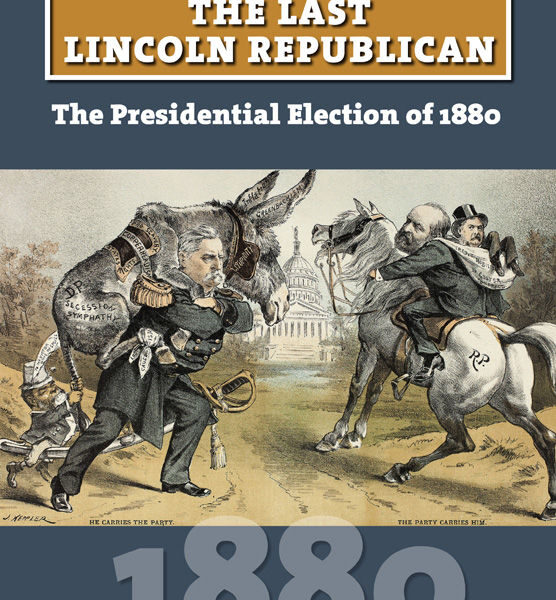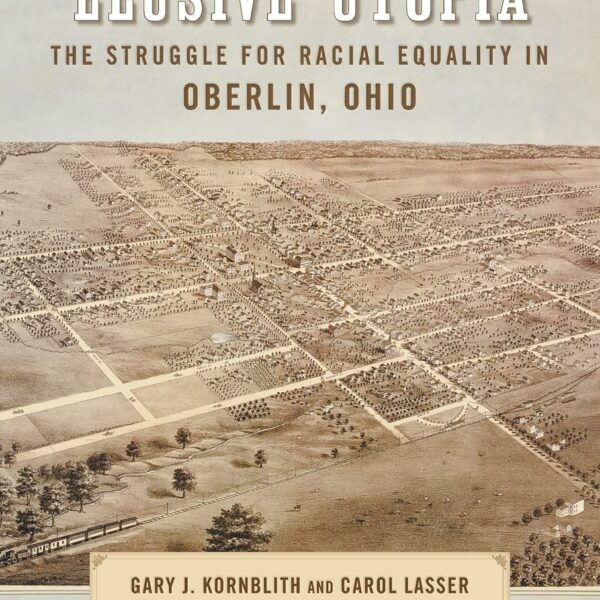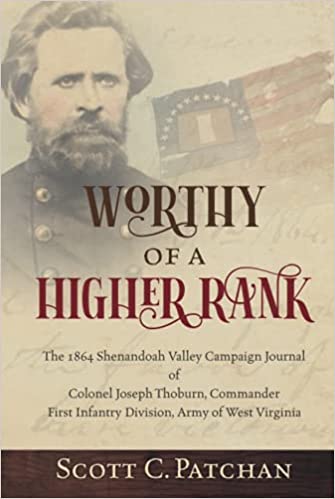Pure Heart: The Faith of a Father and Son in the War for a More Perfect Union by William F. Quigley, Jr. Kent State University Press, 2016. Cloth, IBSN: 978-1606352861. $39.95.
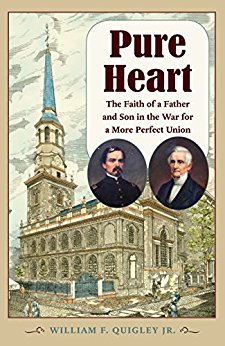 In August of 1862, William White Dorr enlisted as a lieutenant in the newly formed 121st Pennsylvania Volunteer Regiment and joined the fight to rebuild a nation shattered by civil war. While William was new to the fray, his father, Reverend Benjamin Dorr, had spent the better part of two years engaged in a battle of his own as he struggled to temper the fierce political divisions that threatened to tear his beleaguered congregation apart. In Pure Heart: The Faith of a Father and Son in the War for a More Perfect Union, author William F. Quigley, Jr., explores the relationship between Dorr and his soldier son. He argues that by examining Christ Church in Philadelphia and the conflicts plaguing its parishioners, one can attain a glimpse of “an archetypal case of the Union in civil war” (xix). Quigley creates what he calls a “binocular narrative” that effectively synthesizes the sociopolitical complexities of the home front with the grim realities of the battlefield (xxviii). Though Dorr proved one of the most important ministers of his time, Quigley contends that his story, as well as his son’s, is often overlooked, if not ignored entirely. Tapping into a rich source base containing sermons, letters, diaries, eulogies, and regimental histories, Quigley is able to reconstruct and highlight the bond that held a father and son, as well as a rector and his congregation, together amidst the horrors and tumults of war.
In August of 1862, William White Dorr enlisted as a lieutenant in the newly formed 121st Pennsylvania Volunteer Regiment and joined the fight to rebuild a nation shattered by civil war. While William was new to the fray, his father, Reverend Benjamin Dorr, had spent the better part of two years engaged in a battle of his own as he struggled to temper the fierce political divisions that threatened to tear his beleaguered congregation apart. In Pure Heart: The Faith of a Father and Son in the War for a More Perfect Union, author William F. Quigley, Jr., explores the relationship between Dorr and his soldier son. He argues that by examining Christ Church in Philadelphia and the conflicts plaguing its parishioners, one can attain a glimpse of “an archetypal case of the Union in civil war” (xix). Quigley creates what he calls a “binocular narrative” that effectively synthesizes the sociopolitical complexities of the home front with the grim realities of the battlefield (xxviii). Though Dorr proved one of the most important ministers of his time, Quigley contends that his story, as well as his son’s, is often overlooked, if not ignored entirely. Tapping into a rich source base containing sermons, letters, diaries, eulogies, and regimental histories, Quigley is able to reconstruct and highlight the bond that held a father and son, as well as a rector and his congregation, together amidst the horrors and tumults of war.
Dorr headed of one of the most important churches in the United States, historically recognized as “The Nation’s Church” due to its prominent role in the Revolution and founding of the Republic. He ardently believed safeguarding the institution to be his civic and spiritual duty. In order to preserve his church, Dorr worked tirelessly to pacify his flock; he held steadfast to his antislavery ideals while simultaneously avoiding the ire of conservative, proslavery Unionists, who made up a considerable, and increasingly influential, portion of his congregation. Speaking through parables and scriptural allusions, Dorr proved adept at creating and maintaining a theological middle ground that assuaged the passions of his parishioners, regardless of their political affiliations. To measure the success of Dorr’s efforts, Quigley argues, one need look no further than the eulogies and memorials offered in the wake of Dorr’s death in September of 1869. Congregants who once warred with each other, and sometimes with the rector himself, came together in the spirit of contrition to honor the late reverend as a shepherd who led his flock safely through the religious, political, and social crisis engendered by the Civil War.
Interestingly, Quigley illustrates how, in many ways, Dorr’s efforts to unite his congregation mirrored Lincoln’s “far greater but comparable challenge to preserve the Union” (xx). Though the scope of their respective tasks differed markedly, Lincoln and Dorr both labored intensely to achieve the same fundamental goal. To achieve their ends, both men heavily relied upon religious rhetoric, anchoring their discourse in a vocabulary most Americans found familiar and comprehensible. The invocation of religious language is hardly surprising given the time period and the individuals involved, but, as Quigley astutely demonstrates, the tenor of Lincoln and Dorr’s discourses are what made them so exceptional and extraordinary. While most secular and religious leaders seemed willing—even eager—to use religious idioms against one another in the name of party or section, Lincoln and Dorr eschewed elements of an America civil religion that proved vitriolic and divisive. Choosing instead to focus on the themes of humility, atonement, and forgiveness, Dorr and Lincoln sought to bridge a chasm created by the righteous crusading of their fellow citizens. Quigley’s innovative analysis thus demonstrates that at both the micro and macro levels, there existed not one, but several, often competing, strains of American civil religion.
While Quigley’s analysis provides invaluable insight into a congregation and, indeed, a nation experiencing unprecedented degrees of sectarianism, his contention that Reverend Dorr kept his congregation “intact” during and immediately after the war appears rather dubious (xviii). Quigley argues that Dorr is exceptional because, unlike other Americans, he largely refused to take sides in order to maintain a degree of parity within his church. By the second year of the war, however, Dorr had, in fact, made his loyalties abundantly clear, not only by making donations to Republican organization, but through a wholehearted endorsement of his son’s enlistment. Church leaders such as Charles Ingersoll, expressing the opinions of his Copperhead compatriots, largely believed that their rector promoted abolition, if not full racial equality.
The divide between Dorr and his Democratic parishioners came to a head in 1863, when known antiwar activist Peter McCall, then serving as the rector’s warden, found himself relieved of his position (whether by dismissal or resignation, it remains uncertain). McCall subsequently left the congregation. McCall’s circumstances certainly proved exceptional due to the high profile nature of both the individual and the office in question, yet it remains unclear whether this case represented an isolated incident. Did other members of the congregation leave the church because they, much like McCall, disagreed with Dorr’s support for the war generally, and Lincoln’s emancipation program more specifically? By providing a more thorough discussion of McCall’s case and its larger impact, Quigley would add a great deal of clarity to his work. If McCall’s circumstances represented an anomaly, then it would only further support Quigley’s central assertion that Reverend Dorr experienced unprecedented amounts of success in preserving his embattled congregation. Conversely, if the dismissal of the rector’s warden proved less an aberration and more a trend, however slight, then Quigley must reevaluate Dorr’s actions and reassess the degree to which he maintained the integrity of his congregation.
In the end, Quigley’s work represents an invaluable addition to scholarship examining the Civil War era. The text not only illustrates how war dramatically tested, and ultimately altered, northern society, but it also highlights the ways in which religion played a central role in both uniting and dividing the American people.
Andrew Davis is a graduate student in history at The University of Mississippi.

